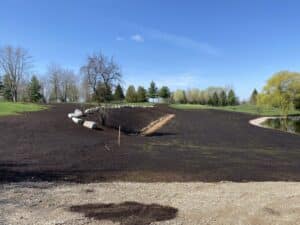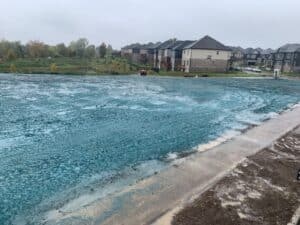Traditional seeding methods like hydroseeding have long held the fort in the ever-evolving world of landscaping and site restoration. However, as we strive for more efficient, environmentally friendly, and cost-effective solutions, a new player has emerged on the horizon: terraseeding. This innovative technique combines composted soil with state-of-the-art technology to deliver exceptional results. This blog will explore why terraseeding is a superior alternative, especially regarding erosion control, soil health, and aesthetic appeal.
What is Terraseeding?

Terraseeding, at its core, is a patented process that involves the calibrated injection of seed into compost or other growing media. This method ensures the seed is planted rather than spread on the surface. Tracing its roots back to the early 2000s, terraseeding has gained traction in various applications, from residential lawns to golf courses and large construction sites. The key to its success lies in its use of high-quality composted soil, which acts as a nurturing bed for the new seed, fostering rapid and healthy growth.
The Terraseeding Method
The terraseeding process unfolds in a series of meticulously planned steps. First, the area is rough graded, followed by spreading a well-draining soil mix. Using specialized blower trucks, a smooth finished layer of compost and seed mixture is evenly applied. This contrasts with hydroseeding, where a slurry of seed, mulch, and water is sprayed over the surface. Terraseeding technology, including blower trucks, ensures a more uniform distribution and deeper soil penetration, which is vital for moisture control and seed germination.
Terraseeding Cost Analysis
Regarding cost, terraseeding is often viewed as a smart investment. While the initial outlay may be higher than hydroseeding, the long-term savings are significant. Terraseeding requires fewer applications, less maintenance, and yields quicker results. Factors influencing cost include:
The size of the area.
The type of seed mixtures used.
The condition of the existing soil.
For most lawns and larger projects, the efficiency and effectiveness of terraseeding justify the expense.
What is Hydroseeding?

Before diving into the advantages of terraseeding, let’s understand its counterpart, hydroseeding. Hydroseeding is a seeding process that involves spraying a slurry mixture of water, seed, fertilizer, and fibre mulch over a prepared ground. This method is cost-effective and suitable for both large and small-scale applications. It’s particularly effective where existing site soil is of good quality, as the seeds need nutrients available in the soil to germinate. However, it has limitations like being subject to weather conditions, not improving soil quality, and potential seed wash-away during heavy rain.
Improved Soil Quality
Terraseeding not only plants seeds but also revitalizes the soil. By injecting seeds into a nutrient-rich compost or growing medium, it significantly enhances the soil’s structure. This process turns even subpar soil into a fertile ground, promoting robust plant growth. The compost used in terraseeding enriches the soil with organic matter, improving its ability to retain moisture and nutrients, which is crucial for the healthy growth of plants.
Weather Resistance
One of the major challenges in traditional seeding methods is vulnerability to weather. Terraseeding offers a solution by protecting the seeds from severe weather conditions. The seeds are nestled within the compost, shielding them from heavy rains, winds, or harsh sun. This protection reduces the risk of seeds being washed away or destroyed, leading to more consistent germination and robust plant growth.
Rapid Germination
The environment created by terraseeding is ideal for seed germination. The warm, nutrient-rich compost provides an optimal setting for seeds to sprout quickly. This leads to faster lawn establishment and a shorter waiting period for visible greenery. The quick germination is particularly beneficial in time-sensitive projects or regions with shorter growing seasons.
Effective on Slopes and Uneven Surfaces
Terraseeding excels in areas where traditional seeding methods falter, such as on slopes, channels, and uneven landscapes. Its ability to control erosion effectively makes it a go-to method for stabilizing these challenging terrains. Creating a uniform and stable vegetation cover, terraseeding prevents soil erosion and promotes healthy plant growth even in difficult-to-reach areas.
Sustainability and Organic Qualities
Terraseeding emphasizes eco-friendliness and utilizes sustainable and organic materials. This approach aligns with modern environmental standards and appeals to the growing demand for green landscaping solutions. By using organic compost and other eco-friendly materials, terraseeding reduces the carbon footprint and supports the ecological balance of the seeded area.
Versatility for Different Applications
The adaptability of terraseeding is one of its key strengths. It can be customized for various applications, from residential lawns and athletic fields to riparian areas and green roofs. This versatility allows it to meet diverse landscaping needs, making it a suitable choice for various projects regardless of their scale or specific requirements.
Challenges and Considerations in Terraseeding
Despite its advantages, terraseeding has its own set of challenges. It requires precise moisture control and the right blend of soil and compost. Climate, soil types, and project scales can also impact its success. However, these challenges can be effectively managed with the right expertise, such as that offered by Organix Applied, and adherence to best practices.
Terraseeding, with its innovative approach and environmental benefits, represents a significant step forward in seeding technology. It offers a versatile solution for various landscaping needs, such as managing large and complex areas. Whether for residential lawns, golf courses, or construction sites, terraseeding ensures the seed is planted rather than spread, leading to healthier, more robust growth in just a few hours. With its patented process and calibrated approach, terraseeding is paving the way for a greener, more sustainable future.
Frequently Asked Questions
How does terraseeding differ from traditional seeding methods?
Terraseeding involves injecting seeds into a compost or growing medium, which provides immediate soil improvement and protection for the seeds. This contrasts traditional methods, where seeds are spread on the surface.
Is terraseeding environmentally friendly?
Yes, terraseeding is environmentally friendly. It uses organic materials and promotes natural soil conditions, making it a sustainable choice.
Can terraseeding be used on any type of soil?
Terraseeding is versatile and can be adapted to different soil types. However, it’s particularly beneficial where soil improvement is needed.
Why Terraseeding is a Game-Changer
Terraseeding is superior to hydroseeding due to its numerous advantages. It enhances soil quality, ensures rapid germination, and offers robust solutions for challenging terrains and weather conditions. As we seek sustainable and effective landscaping solutions, terraseeding emerges as a leading choice for environmental and practical benefits. Whether you’re managing a small residential lawn or a large commercial project, considering terraseeding could be a step towards a more sustainable and visually appealing landscape.
